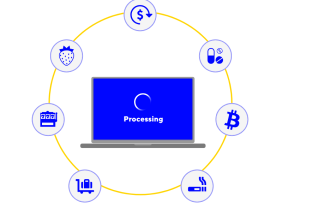If your business is growing faster than your space, you’re not alone. Many small and mid-sized companies face the same issue. You need more room, but signing a lease or expanding your location isn’t always the best move. The costs are high. The contracts are long. And honestly, it’s just not always worth it.
The good news? You don’t have to lease more property to grow. With some smart planning and practical changes, you can do more with the space you already have. Whether you’re running a storefront, warehouse, or office, these ideas can help you grow your operations without adding more square footage or overhead.
Rethink Storage and Workspace Options
Start by looking at the space you already own or rent. Are there areas you’re not using to their full potential? That empty corner of the warehouse? The space behind the building? Even your parking lot might have more potential than you think.
Instead of looking for more property, you can optimize these areas for storage or workspace. One option that many businesses choose is to buy shipping containers and use them for flexible, mobile storage. These containers are weatherproof, sturdy, and easy to modify. They can be converted into offices, tool sheds, inventory rooms, or even break spaces.
Buying a container is much more affordable than leasing another building, and you get to keep control over the space. Plus, containers can be moved or repurposed when your needs change, giving you more freedom than a fixed location.
Use Remote Teams to Reduce Office Crowding
Another effective way to make space is by allowing remote or hybrid work setups. Since 2020, many businesses have shifted toward letting employees work from home part of the time. This trend continues, and it’s helping companies operate more efficiently.
If your team can work remotely, even a few days a week, you won’t need as many desks, meeting rooms, or office equipment. You can rotate schedules or use shared workstations. This allows you to free up space for other business operations—without having to move.
This option is especially helpful for service-based or creative teams. Less office traffic means fewer supplies to stock, fewer utilities used, and more focus time for your staff.
Digitise Files and Minimise On-Site Storage
If your office is packed with filing cabinets and paper records, it’s time to go digital. Paper takes up space fast. And much of it isn’t needed in physical form anymore.
Move your documents, invoices, and reports to the cloud. Use tools like Google Drive, Dropbox, or other cloud storage services. There are also apps for scanning and organizing receipts, contracts, and other records.
Once everything is digitized, you can safely shred and recycle what you no longer need. This clears up storage rooms, desk drawers, and even whole office areas. You’ll save time on filing and searching, and your space will feel more open and usable.
Turn Underused Space Into Revenue
Do you have a spare room in your office or shop that no one uses? That’s wasted space—and it might also be missed income.
Many businesses turn these underused areas into small rental opportunities. You could rent a desk or room to a freelancer, consultant, or startup. If you’re in retail, think about renting shelf space or floor space to a complementary brand.
Pop-up partnerships are a win-win. You fill the space, make some extra cash, and draw in new traffic. You don’t need to commit to a long-term agreement, either. Even short-term rentals can bring in helpful income while making better use of your location.
Invest in Modular Furniture and Equipment
Fixed furniture doesn’t give you many options. If you want more flexibility, try modular or mobile setups instead. Desks with wheels, collapsible tables, or shelving on casters can help you adapt to changing needs. Need a training room in the morning and storage in the afternoon? You can shift things around in minutes.
Even seating can be modular. Stackable chairs or fold-out benches can be used only when needed. The same goes for multi-purpose equipment. Choose machines or workstations that serve more than one task to avoid unnecessary clutter.
This small change keeps your business agile and your workspace efficient.
Create Outdoor Operational Zones
Outdoor space can be a lifesaver, especially if you’re in a region with mild weather. Whether you have a side lot, a back alley, or a section of lawn, it can often be put to good use.
For example, some service businesses set up outdoor work areas. Cafés might use a side window for outdoor pickup. Landscapers and tradespeople can store tools or stage materials outside, freeing up room inside their vans or workshops.
Just make sure the area is secure and weather-appropriate. If needed, you can add fencing or overhead coverage. You’ll gain extra space without having to renovate or lease anything new.
Use Vertical Space More Efficiently
Look up—there’s probably space above you that isn’t being used. Vertical storage can transform your layout without taking up any more floor space.
Install wall-mounted shelving, pegboards, or overhead racks. These work well in offices, shops, kitchens, and warehouses. Use labeled bins or baskets to keep things organized and easy to reach.
Even ceilings can be used for light items or equipment with hanging systems. Just be sure everything is secure and complies with local building codes. With smart vertical storage, you can fit more into your space without making it feel crowded.
You don’t always need a bigger building to grow your business. Sometimes, the solution is simply using what you already have in a smarter way.
Whether it’s adding a shipping container out back, setting up a hybrid work model, or replacing old furniture with flexible options, every change can help. You don’t have to sign a long-term lease or commit to a costly expansion just to take the next step forward.
Start with one change. Look at your layout with fresh eyes. Talk to your team. Ask where things feel tight and what could be done differently. You may be surprised how much space is hiding in plain sight. Smart growth doesn’t always mean a bigger footprint. It just means working smarter with the one you’ve got.














